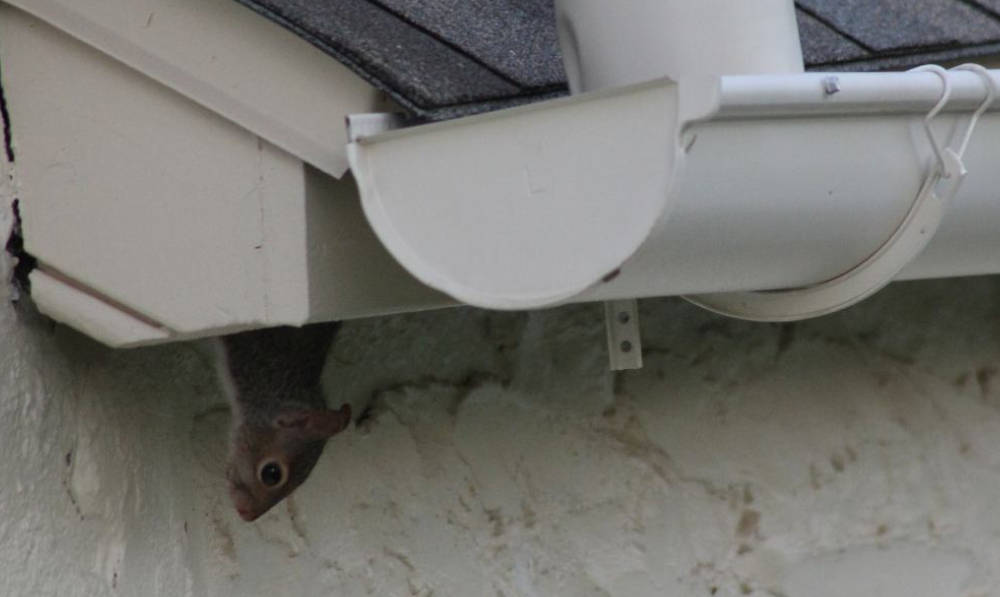KEY TAKEAWAYS:
Identify Presence: Listen for noises and look for signs like droppings and nests to confirm squirrels in the attic.
Seal Entry Points: Locate and seal all but one entry point to manage squirrel access.
Humane Eviction: Use one-way exclusion doors, repellents, or live traps to remove squirrels safely.
Clean and Repair: Clear out nests, disinfect the area, and fix any damage to prevent re-entry.
Prevent Return: Trim trees, install caps and screens, and regularly check and seal new entry points to keep squirrels out.
Having squirrels in your attic can be a nuisance.
They can cause damage to your home by chewing on wires, insulation, and wood, potentially leading to costly repairs. Squirrels can also carry diseases and parasites that pose health risks.
Fortunately, there are humane and effective ways to remove squirrels from your attic and prevent them from returning.
Here’s a step-by-step guide on how to safely and effectively remove squirrels from your attic.
1. Identify the Presence of Squirrels
Before taking any action, ensure that squirrels are indeed the culprits in your attic. Look for signs such as:
– Scratching or scampering noises, especially in the early morning or late afternoon.
– Droppings that are small, dark, and pellet-shaped.
– Nests made of insulation, leaves, and other materials.
– Chewed wires or wood.
2. Locate Entry Points
Squirrels in your garden can enter through small openings in your attic. Conduct a thorough inspection of your home’s exterior, focusing on:
– Roof vents
– Chimneys
– Gaps in siding
– Eaves and soffits
– Any other openings larger than a half-inch in diameter
Seal all entry points except one to ensure the squirrels can exit but not re-enter.
3. Evict the Squirrels
Once you’ve identified their entry and exit points, it’s time to evict the squirrels. Here are some humane methods:
One-Way Exclusion Door: Install a one-way exclusion door at the remaining entry point. This device allows squirrels to exit but prevents them from re-entering. Ensure no young squirrels are left behind.
Repellents: Use natural repellents such as mothballs, ammonia-soaked rags, or commercial squirrel repellents. Place these near the nest to encourage the squirrels to leave.
Live Traps: If exclusion doors and repellents are ineffective, consider using live traps. Bait the traps with peanut butter or nuts, and place them near the squirrels’ nest. Once trapped, relocate the squirrels at least 10 miles away to prevent them from returning. Check local wildlife regulations before trapping and relocating.
4. Clean and Repair the Attic
After ensuring all squirrels are gone, clean and repair the attic to prevent future infestations:
– Remove all nesting materials and droppings. Wear gloves and a mask to protect yourself.
– Disinfect the area to remove any odors that might attract other wildlife.
– Repair chewed wires and damaged insulation.
– Seal all entry points permanently using heavy-duty materials like steel mesh, hardware cloth, or metal flashing.
5. Prevent Future Infestations
To keep squirrels from returning, take preventive measures:
– Trim tree branches at least 10 feet away from your house.
– Install chimney caps and cover vents with mesh screens.
– Regularly inspect your home for new potential entry points and seal them immediately.
– Consider using squirrel repellents around the exterior of your home.
6. When to Call a Professional
If you’re unable to remove the squirrels or if the infestation is severe, it’s best to call a professional wildlife removal service.
Professionals have the expertise and tools to safely and effectively remove squirrels and prevent future problems.

